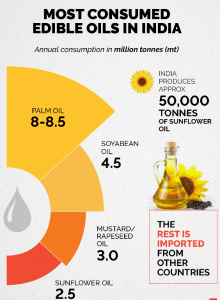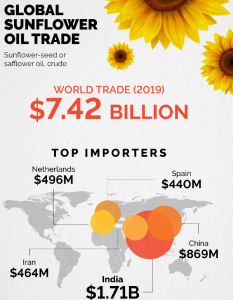THE INTERNATIONAL RELATIONS
1.THE EXCLUSION OF RUSSIA FROM SWIFT
THE CONTEXT: The U.S., Europe and several other western nations are moving to exclude Russia from the Society for Worldwide Interbank Financial Telecommunication (SWIFT), an international network for banks to facilitate smooth money transactions globally. This could be the strongest economic sanction against Russia over its military moves in Ukraine, as it will potentially cut off the country from receiving international payments.
THE EXPLANATION:
What is SWIFT?
SWIFT is a messaging network used by banks and financial institutions globally for quick and faultless exchange of information pertaining to financial transactions. The Belgium-headquartered SWIFT connects more than 11,000 banking and securities organizations in over 200 countries and territories.
Each participant on the platform is assigned a unique eight-digit SWIFT code or a bank identification code (BIC).
EXAMPLE:
If a person,in New York with a Citibank account, wants to send money to someone with an HSBC account in London, the payee would have to submit to his bank, the London-based beneficiary’s account number along with the eight-digit SWIFT code of the latter’s bank. Citi would then send a SWIFT message to HSBC. Once that is received and approved, the money would be credited to the required account.
SWIFT is merely a platform that sends messages and does not hold any securities or money. It provides standardised and reliable communication to facilitate the transaction.
What happens if one is excluded from SWIFT?
If a country is excluded from the most participatory financial facilitating platform, its foreign funding would take a hit, making it entirely reliant on domestic investors. This is particularly troublesome when institutional investors are constantly seeking new markets in newer territories.
An alternative system would be cumbersome to build and even more difficult to integrate with an already expansive system. SWIFT, first used in 1973, went live in 1977 with 518 institutions from 22 countries.
Are any countries excluded from SWIFT?
Certain Iranian banks were ousted from the system in 2018 despite resistance from several countries in Europe.
How is the organization governed?
- SWIFT claims to be neutral. Its shareholders, consisting of 3,500 firms across the globe, elect the 25-member board, which is responsible for oversight and management of the company.
- It is regulated by G-10 central banks of Belgium, Canada, France, Germany, Italy, Japan, The Netherlands, the United Kingdom, the United States, Switzerland, and Sweden, alongside the European Central Bank. Its lead overseer is the National Bank of Belgium.
- The SWIFT oversight forum was established in 2012. The G-10 participants were joined by the central banks of India, Australia, Russia, South Korea, Saudi Arabia, Singapore, South Africa, the Republic of Turkey, and the People’s Republic of China.
2. EXERCISE EASTERN BRIDGE -VI
THE CONTEXT: The Indo-Oman exercise, Eastern Bridge-VI (2022) was successfully conducted at Air Force Station Jodhpur. Royal Air Force of Oman (RAFO) participated with Indian Air Force (lAF) in the exercise which was aimed at providing operational exposure and undertaking mutual exchange of best practices, towards enhancing operational capabilities of both the Air Forces.
THE EXPLANATION:
- It was aimed at providing operational exposure and undertaking mutual exchange of best practices, towards enhancing operational capabilities of both the Air Forces.
- According to the Defense Ministry stated that both sides discussed further prospects of mutual co-operation. The exercise provided an opportunity for fruitful interaction between IAF and RAFO elements through mutual exchange of experience and operational knowledge. It also provided avenues of cultural exchanges between the personnel of both countries.
THE ECONOMIC DEVELOPMENTS
3. EXPLAINED: WHAT IS MARKET INFRASTRUCTURE INSTITUTIONS?
THE CONTEXT: The National Stock Exchange (NSE), the country’s largest equities and derivatives exchange, was fined for laxity in governance pertaining to actions taken during the tenure of its former MD and CEO Chitra Ramakrishna.
THE EXPLANATION:
What are MIIs?
- Stock exchanges, depositories and clearing houses are all Market Infrastructure Institutions and constitute a key part of the nation’s vital economic infrastructure.
- A panel set up under the chairmanship of former RBI Governor Bimal Jalan — to examine issues arising from the ownership and governance of MIIs — in its 2010 report said: “The term ‘infrastructure’ would mean the basic, underlying framework or features of a system; and the term ‘market infrastructure’ denotes such fundamental facilities and systems serving this market. The primary purpose of securities /capital market is to enable allocation/reallocation of capital/financial resources.”
- Such movement, it pointed out, helped optimal use of money in the economy and fostered economic development. Well-functioning MIIs, constitute “the nucleus of (the) capital allocation system”, are indispensable for economic growth and have a net positive effect on society like any other infrastructure institution, the panel noted.
Why are they considered to be systemically important?
- According to the Jalan committee, MIIs are systemically important in India is clear from the phenomenal growth of these institutions in terms of market capitalisation of listed companies, capital raised and the number of investor accounts with brokers and depositories and the value of assets held in the depositories’ account.
- Unlike typical financial institutions, the number of stock exchanges, depositories and clearing corporations in an economy is limited due to the nature of its business, although they cater to the entire marketplace.
- “Any failure of such an MII could lead to even bigger cataclysmic collapses that may result in an overall economic downfall that could potentially extend beyond the boundaries of the securities market and the country.”
What are the specific institutions in India that qualify as MIIs?
Among stock exchanges, the SEBI lists seven, including the BSE, the NSE, the Multi Commodity Exchange of India and the Metropolitan Stock Exchange of India. There are two depositories — charged with the safekeeping of securities and enabling their trading and transfer — that are tagged MIIs: the Central Depository Services Ltd. and the National Securities Depository Ltd.
4. RUSSIA-UKRAINE CONFLICT HITS SUNFLOWER OIL IMPORTS
THE CONTEXT: Russia’s invasion of Ukraine has jolted the crude oil market around the world and that is poised to raise petrol and diesel prices in India as well. However, that is not the only issue India has to face because of this geopolitical conflict.
THE EXPLANATION:
- India, which heavily depends on edible oil imports to fulfil its requirement. Nearly 93 per cent of India’s sunflower seeds oil imports are sourced only from Ukraine and Russia.Indian traders have contracted 5.5 lakh tonnes sunflower oil from Ukraine, Russia, most of which is stuck.

- Traders of India, the largest importer of sunflower oil at 60 per cent of its total needs, have contracted around 5.5 lakh tonnes of sunflower oil from Ukraine and Russia in February and March,of this, 1.8 lakh tonnes have left but the fate of the rest of the shipments remains uncertain.
- India’s total imports of edible oils surged to a record ₹1.17 lakh crore in 2020-21 marketing year (November to October) from almost ₹72,000 crore in the previous year due to a sharp rise in global prices.
- According to the Department of Food and Public Distribution,the total quantity of oils imported, palm oils constitute around 54 per cent and are imported mainly from Indonesia and Malaysia. Soybean oil constitutes around 25 per cent and is imported from Argentina and Brazil.
- It is to be noted that the effective rate of duty on crude palm oil is 35.75 per cent while that on soybean and sunflower oil is 38.5 per cent.
- Consumer food prices had risen the fastest in January (2022) in the past over a year, which has affected the household budgets. This has happened despite the government cutting taxes and imposing limits on the stocking of cooking oil.

THE SCIENCE AND TECHNOLOGY
5. THE LARGEST BACTERIUM EVER DISCOVERED
THE CONTEXT: Scientists discovered an absolutely massive bacterium that can be seen without the aid of a microscope and lurks among the mangroves of Grande-Terre in the Caribbean.
THE EXPLANATION:
Most species of bacteria measure between one and five micrometers long, but the biggest previously known was Thiomargarita namibiensis, which tops out at 750 micrometers or 0.75 mm. But this newly identified species blows everything else out of the water – its average length is a whopping 9,000 micrometers (0.9 cm/0.4 in), with the largest recorded specimen reaching 2 cm. This single cell is longer than your everyday housefly.
The organism was actually first discovered about a decade ago, as bundles of white filaments growing on decaying mangrove leaves in a Caribbean swamp. But at the time, its discoverer, marine biologist Olivier Gros, didn’t realize they were bacteria, let alone single cells. That identification only came more recently, with detailed analysis.
Its physical size isn’t the only giant thing about this bacterium. Genetic analysis revealed that its genome is also massive, containing 11 million bases and around 11,000 genes, which is almost three times larger than most bacterial genomes. On closer inspection, the team found that the genome is quite repetitive, with more than half a million copies of certain sequences.
Value Addition:
Few Important Facts about Bacteria.
- Bacteria are microscopic, single-celled organisms that exist in their millions, in every environment, both inside and outside other organisms.
- Some bacteria are harmful, but most serve a useful purpose. They support many forms of life, both plant and animal, and they are used in industrial and medicinal processes.
Types of Bacteria:
Spherical: Bacteria shaped like a ball are called cocci, and a single bacterium is a coccus. Examples include the streptococcus group, responsible for “strep throat.”
Rod-shaped: These are known as bacilli (singular bacillus). Some rod-shaped bacteria are curved. These are known as vibrio. Examples of rod-shaped bacteria include Bacillus anthracis (B. anthracis), or anthrax.
Spiral: These are known as spirilla (singular spirillus). If their coil is very tight they are known as spirochetes. Leptospirosis, Lyme disease, and syphilis are caused by bacteria of this shape.
Where do they live?
- Bacteria can be found in soil, water, plants, animals, radioactive waste, deep in the earth’s crust, arctic ice and glaciers, and hot springs. There are bacteria in the stratosphere, between 6 and 30 miles up in the atmosphere, and in the ocean depths, down to 32,800 feet or 10,000 meters deep.
- Aerobes, or aerobic bacteria, can only grow where there is oxygen. Some types can cause problems for the human environment, such as corrosion, fouling, problems with water clarity, and bad smells.
- Anaerobes, or anaerobic bacteria, can only grow where there is no oxygen. In humans, this is mostly in the gastrointestinal tract. They can also cause gas, gangrene, tetanus, botulism, and most dental infections.
THE GOVERNMENT SCHEMES AND INITIATIVES IN NEWS
6. THE OMBUDSPERSON APP FOR MGNREGS
THE CONTEXT: TheUnion Ministry for Rural Development and Panchayati Raj, launched Ombudsperson App for Mahatma Gandhi NREGA.According to the Ombudsperson App is a step towards e-governance, this will be helpful in ensuring transparency and accountability.
THE EXPLANATION:
- The Ministry has developed an Ombudsperson App for smooth reporting and categorization of grievances by Ombudsperson based on complaints he received from various sources viz. physical, digital and mass media, related to the implementation of the Mahatma Gandhi NREG Scheme in the States/UTs.
- At present, the reporting of complaints, passing awards and disposal of complaints are in physical form. This will strengthen Ombudsperson in the discharge of her/his duty in a hassle-free manner. After joining of Ombudsperson, the Registration of Ombudsperson is done by the State. On registration, Ombudsperson will use the Username and password to use this App.
- Also, it will enable easy tracking and timely passing of awards by Ombudsperson on each case as per the guidelines. Ombudsperson can also easily upload the quarterly and annual reports on the website through the app.
- The app will help the ombudsperson to a greater extent in discharging her/his duty towards transparency and accountability. Also, smooth disposal of the grievances in a time-bound manner with minimal support of further human resources will be possible through the app.
THE PRELIMS PRACTICE QUESTIONS
QUESTIONS OF THE DAY 28TH FEBRUARY 2022
Q. Consider the following statements with reference to SWIFT:
- It is a messaging network used by banks and financial institutions globally.
- It headquarter is in Paris.
- It is merely a platform that sends messages and does not hold any securities or money.
Which of the statements given above is/are correct?
a) 1 only
b) 1 and 2 only
c) 1 and 3 only
d) 1, 2 and 3
ANSWER FOR 26TH FEB 2022
Answer: B
Explanation:
Swami Dayananda Saraswati founded the Arya Samaj in Bombay in 1875. A few years later the headquarters of the Arya Samaj were established at Lahore.
Main principles and objectives of the Arya Samaj are as follows:
- Believes in infallibility of Vedas and takes them as only truth and source of all source all knowledge. Believed that post-vedic texts such as Puranas were responsible for pollution of Vedic religion.
- Opposes the idol-worship and reincarnation theory of God but accepts the doctrine of ‘Karma’ and transmigration of soul. Dayanand also rejected the theory of destiny / fate (Niyati).
- Believes in one God who has no physical existence.
- Rejects Brahmanical dominance of spiritual and social life of Hindus. Denounces claim of Brahmins as intermediaries between man and God.
- Supported Four Varna System but the Varna system should be based on merit not birth. Hindu religion gives everyone an equal place in the spiritual and social life.
- Advocated equal status for women in the society. There is no room for any kind of discrimination against women on the basis of gender.
- Advocated widow remarriage, female education and opposed polygamy, child marriage, Sati, etc.
- Backed propagation of Hindi and Sanskrit. Considered good education as base of a goodNand solid social system. It did phenomenal work in the field of education even for women.
- Denounces socio-religious evils such as animal sacrifices, religious pilgrimages, feeding the dead through sraddhas, magic and charms etc. According to Swami Dayanand, these evils exist in the society due to ignorance of the teaching of the Vedas.


